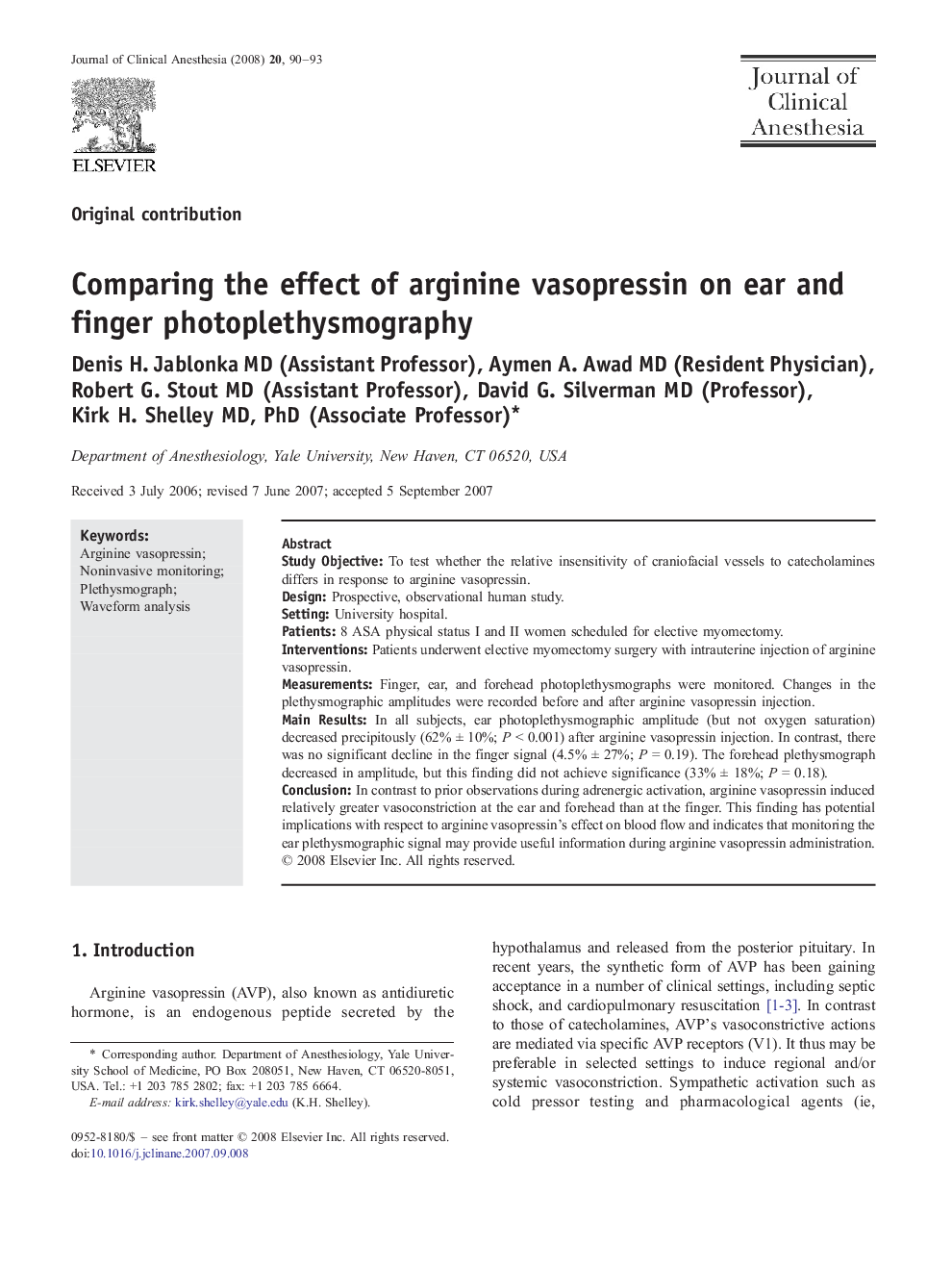| Article ID | Journal | Published Year | Pages | File Type |
|---|---|---|---|---|
| 2764168 | Journal of Clinical Anesthesia | 2008 | 4 Pages |
Study ObjectiveTo test whether the relative insensitivity of craniofacial vessels to catecholamines differs in response to arginine vasopressin.DesignProspective, observational human study.SettingUniversity hospital.Patients8 ASA physical status I and II women scheduled for elective myomectomy.InterventionsPatients underwent elective myomectomy surgery with intrauterine injection of arginine vasopressin.MeasurementsFinger, ear, and forehead photoplethysmographs were monitored. Changes in the plethysmographic amplitudes were recorded before and after arginine vasopressin injection.Main ResultsIn all subjects, ear photoplethysmographic amplitude (but not oxygen saturation) decreased precipitously (62% ± 10%; P < 0.001) after arginine vasopressin injection. In contrast, there was no significant decline in the finger signal (4.5% ± 27%; P = 0.19). The forehead plethysmograph decreased in amplitude, but this finding did not achieve significance (33% ± 18%; P = 0.18).ConclusionIn contrast to prior observations during adrenergic activation, arginine vasopressin induced relatively greater vasoconstriction at the ear and forehead than at the finger. This finding has potential implications with respect to arginine vasopressin's effect on blood flow and indicates that monitoring the ear plethysmographic signal may provide useful information during arginine vasopressin administration.
